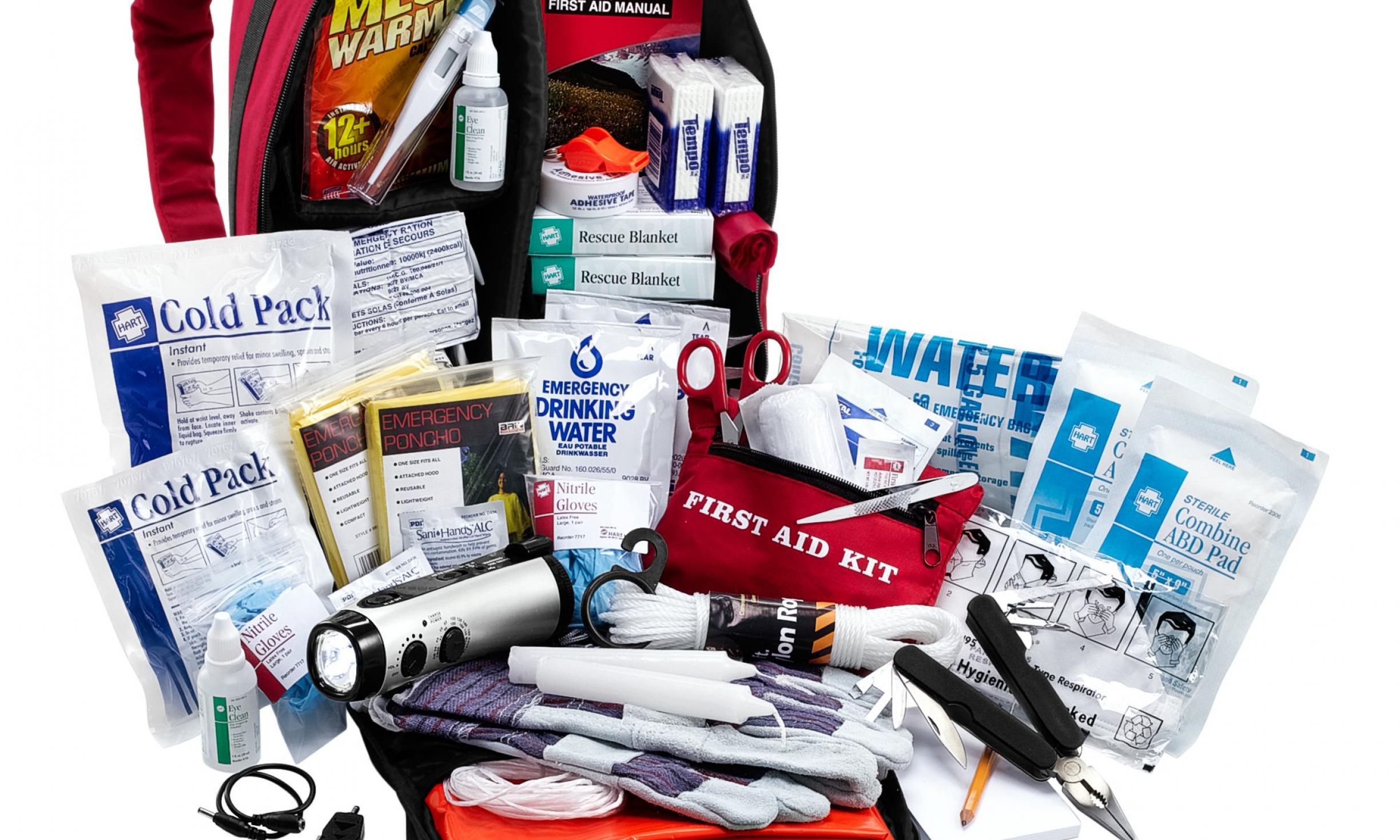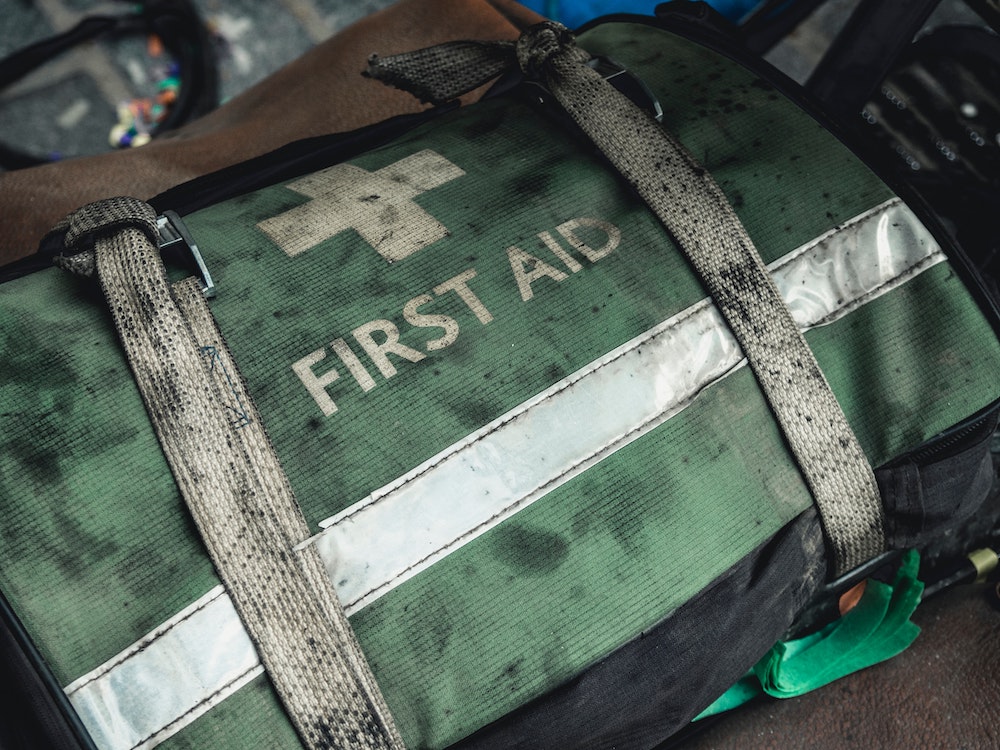Whether you’re planning a day hike in a local state park or a week-long adventure in the wilderness, always plan for the unexpected. A wilderness survival kit is a great idea.
It’s all too easy to find yourself in a survival situation due to something as simple as slipping on wet rocks or a muddy section of trail and spraining an ankle. Naturally, if this happens, you hope you’re not alone, but what if you are? Or even worse, what if your companion is unable to provide any help? Can you take responsibility for saving your own life? And maybe even saving your companion’s life?
The key to survival is planning. Plan for an emergency before it becomes necessary. It’s impossible to anticipate every contingency, but you can take steps to prepare for what you may encounter as you explore nature and hopefully avoid a survival situation that didn’t need to be one.
Dress for Success
Often, the area you are going into is the first clue to items you’ll need in your survival kit. You need to dress appropriately, from head to toe. You may not have thought about it, but the very clothing you wear is part of your wilderness survival kit.
If you plan on spending time in the high country above the timberline, protection from the sun and wind is necessary. Once you’re out of the trees, your body temperature will drop quickly as wind chill becomes a factor. Those rocky slopes don’t offer much protection from the wind.
A light jacket can protect you from the sun, too. Even SPF 40 may not be good enough to prevent a bad case of sunburn at higher elevations. While on that subject, don’t forget the sunblock!
Today’s new fibers make warm clothing lightweight and virtually waterproof. When I started spending time outdoors, we wore mostly wool because when it got wet, it still retained some insulating qualities. It was heavy, it itched and when you did get wet, you smelled like a wet dog. Also, woolen clothing was difficult to clean. You couldn’t just throw it in the washer.
Modern fabrics are much more “user-friendly”. They are washable. They come in a variety of colors. Extreme weather clothing available today is much more comfortable than the clothing I wore 40 years ago!
Dress in layers, and always, even on warm summer days, put a jacket or poncho in your pack—just in case.
Don’t forget to wear a hat. A hat prevents a lot of heat loss in cold weather and protects you from the heat during the really hot days. I have two favorite hot weather hats. One is a camouflage boony hat that I’ve had around for almost 30 years now. It’s been everywhere with me and is rapidly falling apart, but it’s cotton, absorbs sweat so it doesn’t run into my eyes and keeps me cool. The other is a straw cowboy hat that’s also seen better days, but it’s cool and comfortable.
In cold weather, I like hats that cover my ears if I’m going to be out for any length of time. A simple wool stocking cap will suffice, but a balaclava that can cover my nose and mouth is much better for keeping warm. Cover that with the hood of a parka, and I can keep warm!
The Basics
Lessons learned in the past year point out a need for two survival kits. One personal kit to carry with you when you hike and a second, larger, survival kit geared for long term survival in an urban survival situation. What if you need to evacuate your home? What should you have prepared in a grab bag of essentials?
First, let’s take a look at the personal survival kit, the one you’ll be carrying when you hike and explore. Later we’ll take a brief look at the essential elements of a grab bag for a home evacuation plan.
Personal Wilderness Survival Kit
A personal wilderness survival kit should be small enough to be carried on your body without being a burden. Anything which is an inconvenience will be more apt to be left behind. Make it only the essential items to survive an emergency situation of short duration. After all, you’re not going into the wilderness to homestead. This is just a simple hike to enjoy natures’ wonders.
Now, what items are essential? These should be carried where they are readily accessible. Less important items can be stowed away in your pack.
I like to keep a map and compass handy, although these days, I use a GPS (Global Positioning System) a lot more than a compass. Here’s a word of warning, never rely solely on a GPS as a means of navigation. A GPS device is fragile. It can be dropped and break. Learn how to use a compass. Also make sure you carry extra batteries. If it’s cold, carry the extra batteries in an inside pocket to protect them from cold. I like to put extra batteries inside a ziplock bag to keep them dry.
With the price of GPS dropping more every year, I strongly recommend adding this item to your gear list. Adding a waypoint for the trailhead to your GPS makes finding your way back a lot easier. It also lets you know just how far you need to go to get back before dark.
As you select items for your wilderness survival kit, choose items that have more than one purpose whenever possible. Do whatever you can to cut down on the size and weight of your survival kit. Above all else, do not duplicate items.
Your personal wilderness survival kit doesn’t need to be elaborate. I used to use an Army surplus ammo pouch to carry my things in. A fanny pack can work well for something when you’re not going to carry a day pack. An empty Band-Aid box or even a soap dish works well for a basic survival kit container. I’ve seen a lot of plastic cases at the supermarket that are waterproof and airtight, small enough to carry easily and durable.
Wilderness Survival Kit Essentials
First of all, some sort of first aid items. Since we’re talking survival, I mean real first aid items, not just Band-Aids and first aid ointment. Get a triangle bandage and some large gauze pads to use for compresses. If you need a first aid kit in a survival situation, you don’t need a Band-Aid, you need serious help. A triangle bandage can be used for a pressure dressing or to attach a splint. This is useful.
I’d recommend picking up a good personal first aid kit from your local chapter of the American Red Cross or drug store and putting it in your day pack. Better yet, pick up several and put one in every one of your backpacks so you never go off without it.
Your basic wilderness survival kit should include:
- First aid items
- Water purification system
- Fire starting equipment
- Signaling items
- Food procurement items
- Shelter items
Some examples of these items are:
- Butane Lighter, magnesium fire starting tool, waterproof matches
- Snare wire
- Signaling mirror
- Compass
- Fishing line
- Fishhooks
- Candle
- Small magnifying lens
- Water purification tablets
- Solar blanket
- Surgical blades
- Butterfly sutures
- Needle and thread
- Knife
I suppose everyone has an opinion on what kind of knife you should have. Normally, I always carry a Leatherman™ SuperTool™ on my belt and have for years. It has a variety of blades and tools and comes in handy every day. Besides, I like the lifetime guarantee. If I break it, they fix it. For woodsman, I’d recommend carrying another knife. A sheath knife with a blade at least 5″ long with a full tang blade comes in handy.
Don’t waste money getting a “Rambo” knife. It may impress the unknowing, but it’s not really all that useful. Stick with a simple 5″-6″ blade, and learn how to keep it sharp!
A lot of survivalist types think you should always carry a weapon when venturing into the wilderness. To be honest about it, I’ve been in some pretty wild parts of the world and never really needed a weapon for protection (outside of combat zones). When I carried a handgun, it was mostly for show.
My advise? Unless you’re going hunting, ditch the weapons. They only get in the way.
Urban Survival Kit
In light of the events of the aftermath of Hurricanes Katrina and Rita, any discussion of survival needs to include a brief mention of how to prepare for an urban disaster that could throw any one of us into a survival situation. It may not be a hurricane, but a terrorist attack, an earthquake, flood, or other act of nature could interrupt our lives and disrupt the pattern of support we’ve become accustomed to.
You may need to evacuate your home at a moments notice, or “shelter-in-place” (staying where you) and wait out a disaster. Your disaster supplies kit can save lives.
Here are a few ideas to prepare your urban survival kit. Use an easy-to-carry container such as a duffel bag or large, covered plastic container with handles for easy carrying.
Include the following essential items: food supplies that do not require preparation or refrigeration, at least three gallons of water in a tightly sealed container per person (roughly three days worth of water), special needs items for any member of your household (such as infant formula, medicines or items for seniors or people with disabilities), first aid supplies and a first aid reference book, a small flashlight and extra batteries, a change of clothing, sleeping bags or bedrolls, a battery-powered radio or television and extra batteries, cash, and copies of essential documents. It is very important to check all perishable and dated items at least twice a year, including things like food, batteries, and medications.
Think Ahead
The best advice is to think ahead. Learn and practice basic wilderness skills so you’re prepared if you ever need to use survival techniques. Take a First Aid course and learn CPR.
Don’t overstep your abilities. Know your limits. Don’t attempt to hike farther in one day than is a realistic goal. Don’t allow others to force you to overextend your limits. If you’re not comfortable with a trail or the pace, speak up!
Whenever you venture into the outdoors, take time to enjoy the sights, but remember that you are responsible for yourself. Plan for the unexpected. Make your wilderness survival kit. Don’t allow an unfortunate incident to force you into a survival experience.
That’s one story I don’t want to hear from you.

